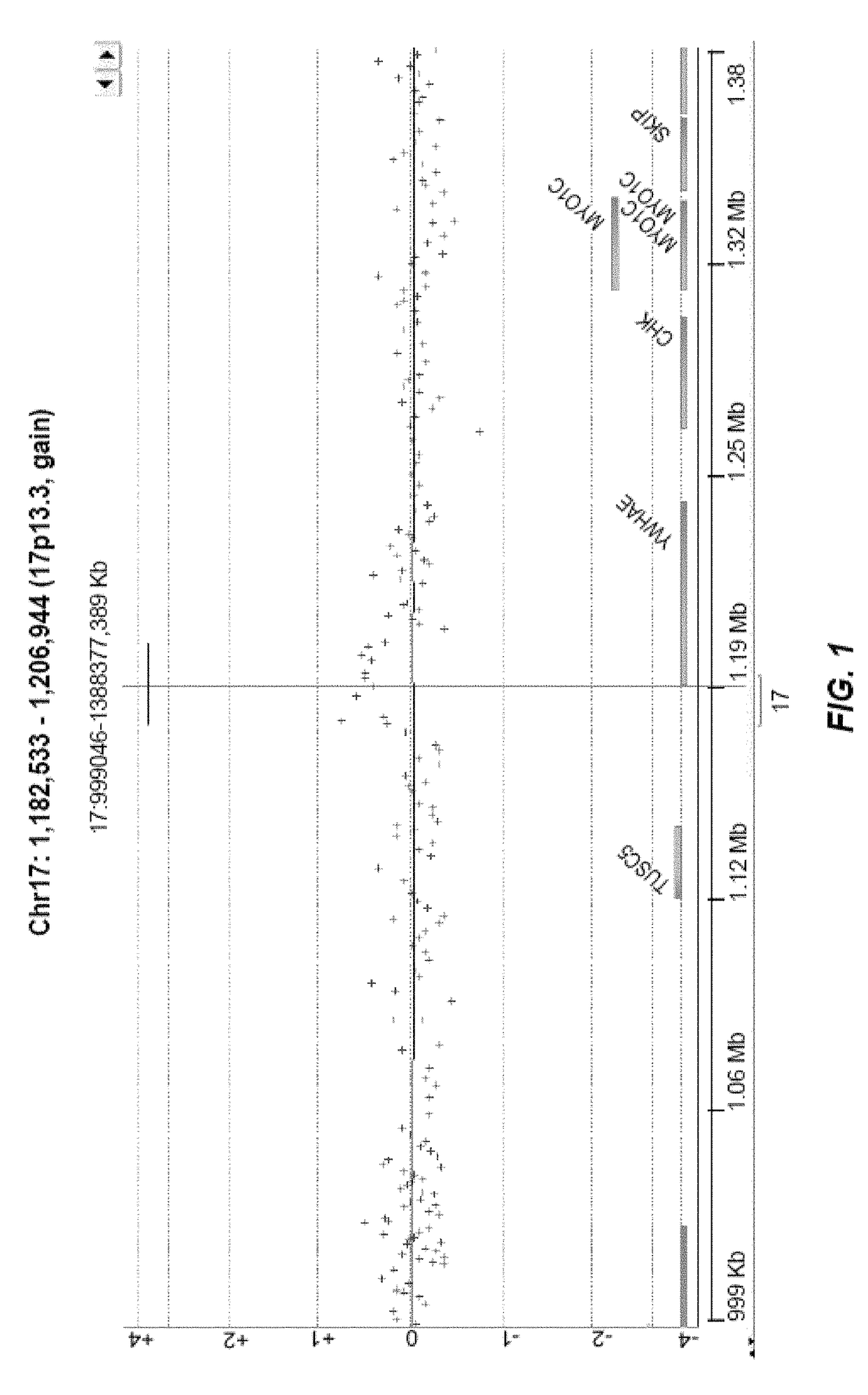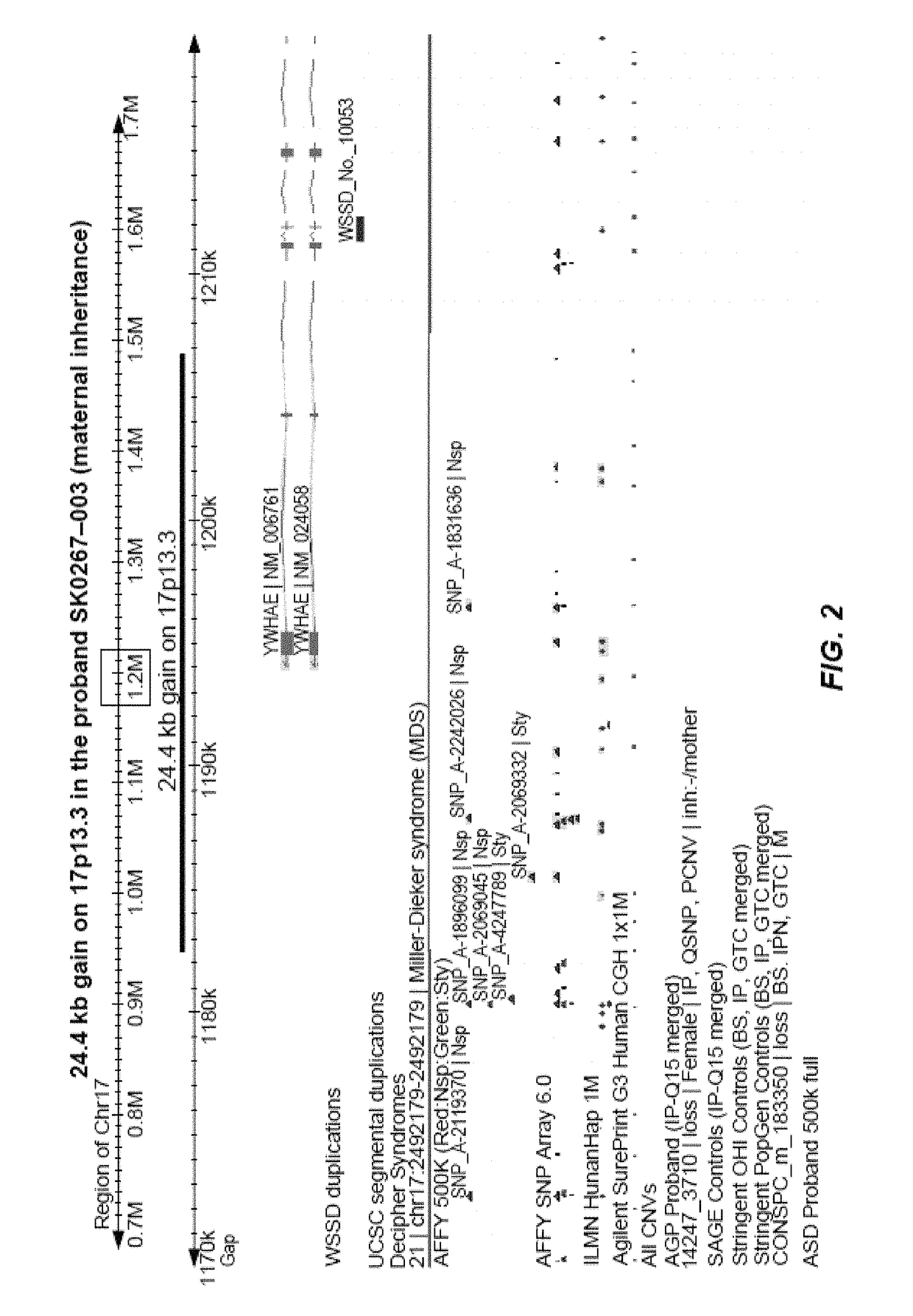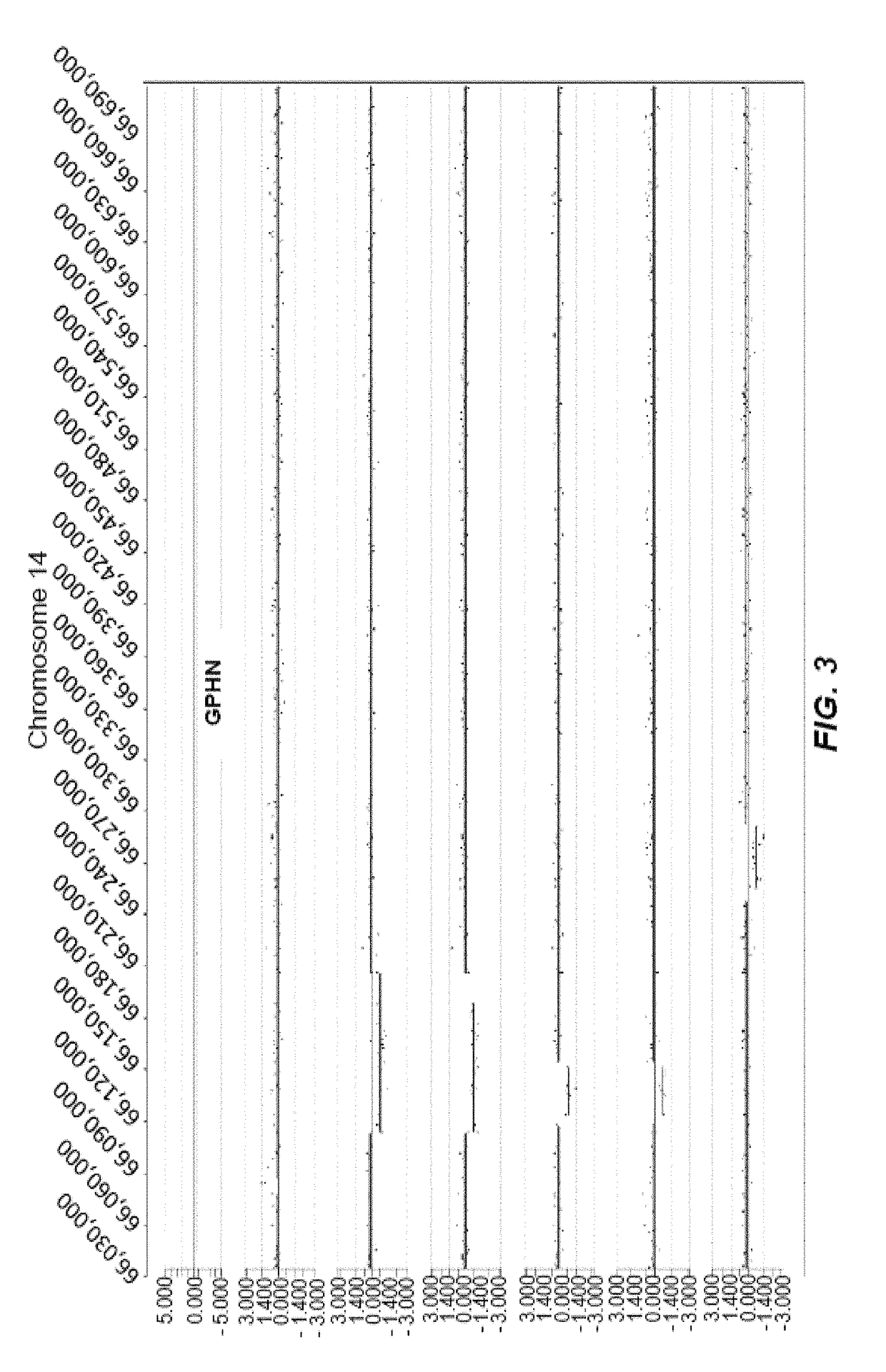Methods and compositions for screening and treating developmental disorders
a technology for developing disorders and compositions, applied in the field of methods and compositions for screening and treating developmental disorders, can solve the problem of rare variants in the majority of cases
- Summary
- Abstract
- Description
- Claims
- Application Information
AI Technical Summary
Benefits of technology
Problems solved by technology
Method used
Image
Examples
example 1
[0378]In the present study, an Agilent 1M CGH array was used to detect novel, rare CNVs in a total of 818 individuals, including 703 unrelated ASD probands, 35 affected ASD siblings, 45 parents, 34 unaffected siblings and one individual with developmental delay. A vast majority of these samples have been previously run on other SNP microarrays. The ASD cases were competitively hybridized to a pool of fifty sex-matched Caucasian controls as a reference. The CNV calling was performed using Aberration Detection Module 2 (ADM2) algorithm of DNA Analytics 4.0.85 and a circular binary segmentation (CBS) algorithm implemented in the DNAcopy package. The CNVs detected by both algorithms were defined as stringent and were utilized for further analyses. The calls were compared with the CNV data from Illumina 1M single and duo, Affymetrix 500K, Affymetrix 6.0, and Illumina 2.5M arrays. For example, 350 samples in the dataset were run previously on Illumina 1M single array which was analyzed us...
example 2
[0383]Another interesting recurrent CNV of size 24.8 kb was detected in two unrelated ASD cases, a duplication event disrupting two exons of YWHAE (tyrosine 3 / tryptophan 5-monooxygenase gene) gene at the 17p13.3 locus (FIG. 2). It was maternally inherited in both ASD cases and was not present in controls. YWHAE belongs to the 14-3-3 family of proteins, which mediate signal transduction, and is highly conserved in both plants and mammals Only micro-duplications in YWHAE gene have been reported in ASD. It has been shown that the phenotype of patients with a 17p13.3 micro-duplication involving YWHAE gene show autistic manifestation, behavioral symptoms, speech and motor delay, subtle dysmorphic facial features, and subtle hand-foot malformation.
example 3
[0384]FIG. 3 represents an example of intronic CNVs clustered within an intronic region of the gene GPHN (gephyrin) located on chromosome 14. There are 7 ASD cases in total and 6 of these are depicted. The CNVs include a gain (log2ratio>0.35) and losses (log2ratio<−0.35).
[0385]In the figure, two types of data track information are shown, from top to bottom: 1) RefSeq gene annotation showing the genome location (x-axis) of genes demarcated in light gray (introns) and dark gray (exons) and with multiple entries depicted if multiple transcript variants are annotated that correspond to the gene, and 2) array CGH data (black dots correspond to the probes on the microarray) for ASD cases (6 total) with a CNV wherein the y-axis is the log2ratio value of the test (ASD case) and reference (healthy control) genomic DNAs and the x-axis corresponds to the genome location of the probes and CNVs, which are depicted as line segments shifted positively (copy number gain) or negatively (copy number ...
PUM
| Property | Measurement | Unit |
|---|---|---|
| nucleic acid | aaaaa | aaaaa |
| nucleic acid hybridization | aaaaa | aaaaa |
| Autism Spectrum Disorder | aaaaa | aaaaa |
Abstract
Description
Claims
Application Information
 Login to View More
Login to View More - R&D
- Intellectual Property
- Life Sciences
- Materials
- Tech Scout
- Unparalleled Data Quality
- Higher Quality Content
- 60% Fewer Hallucinations
Browse by: Latest US Patents, China's latest patents, Technical Efficacy Thesaurus, Application Domain, Technology Topic, Popular Technical Reports.
© 2025 PatSnap. All rights reserved.Legal|Privacy policy|Modern Slavery Act Transparency Statement|Sitemap|About US| Contact US: help@patsnap.com



